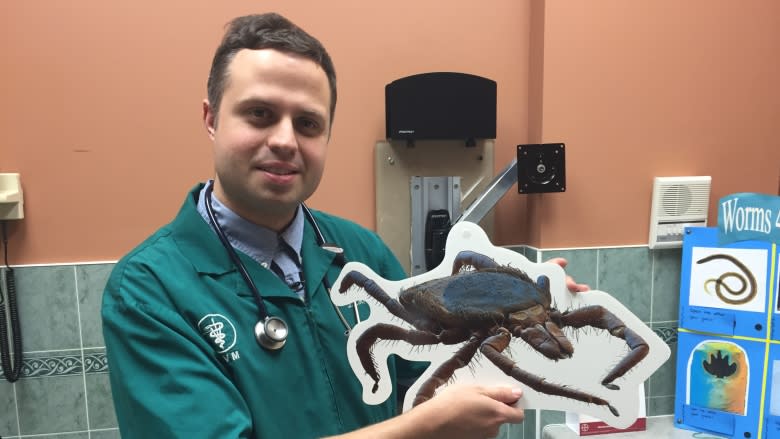Ottawa now at-risk area for Lyme disease
The tick season has started and this year the City of Ottawa has been designated an at-risk area for Lyme disease for the first time, according to Ottawa Public Health.
Craig Calder with Ottawa Public Health said the city tests submitted ticks for Lyme disease to assess the risk of acquiring the infection each year.
When the city analyzed the statistics from 2016 earlier this year, more than 20 per cent of the ticks tested positive for Lyme disease and that crosses the threshold to be deemed an at-risk area.
"The rate is increasing," said Calder.
Ticks are tiny arachnids often found in tall grass near wooded areas, and can carry Lyme disease, which can cause facial palsy, liver damage and other health problems in humans.
Calder said the risk is not just from encountering ticks in wooded areas. So far this year, Ottawa Public Health has received 53 tick submissions since Easter and some of them have been from within the city limits.
"We've had submissions from persons including people who were working in their suburban yards, so it is not just a naturalized area concern. People have to be vigilant both in the suburbs and when they are in naturalized areas," said Calder.
So far, no submitted ticks this year have tested positive for Lyme disease.
Vets already seeing ticks on pets
In mid-May, Calder said the city sent out notices to veterinarians to be on the lookout for the bugs.
Dr. Kevin McIntosh with Algonquin Animal Hospital said he has seen people bring in dogs not knowing they were carrying ticks.
"They'll come in for their annual vaccines or they will be in for something completely different and then we will actually find the ticks on the dogs themselves and extract them out from there," said McIntosh.
He said he has already picked three ticks off his own dogs after walking on trails in Kanata this month.
"I expect that we are going to see quite a few ticks this year just because of the moisture patterns we're seeing and also because every year it seems to get worse and worse," said McIntosh.
"I wouldn't be surprised if we continue to see more and more ticks every single year."
Reported Lyme disease cases also on the rise
Calder said in 2016 there were 75 reported cases of Lyme disease in Ottawa — 28 per cent of them were acquired inside the city limits. In 2010, there were only 7 reported cases of Lyme disease in Ottawa.
"Any number is a concern to us, so, yes, 75 is a number of concern for sure," said Calder.
Ottawa Public Health says people should watch out for signs and symptoms of Lyme disease, including a bullseye rash, fever, chills, muscle and joint pain, fatigue, headaches and swollen lymph nodes.
Ottawa Public Health says if you believe you have had a tick on your body for more than 24 hours, you should consult a doctor to determine if you need treatment.
If you have removed a tick from your body, Ottawa Public Health asks that you keep it and submit it to the city by calling 311.




